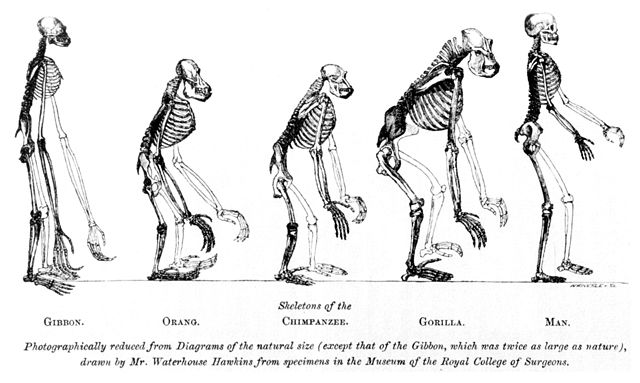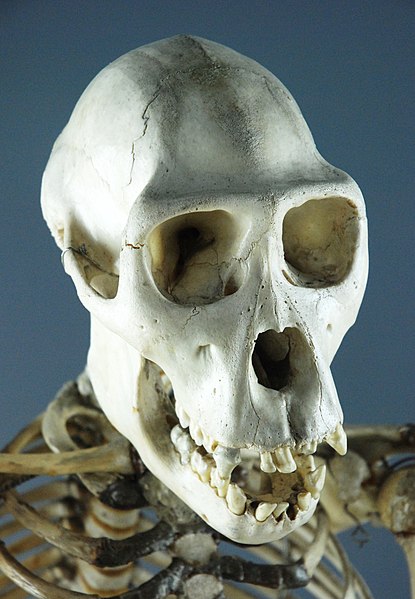Craniometry is measurement of the cranium, usually the human cranium. It is a subset of cephalometry, measurement of the head, which in humans is a subset of anthropometry, measurement of the human body. It is distinct from phrenology, the pseudoscience that tried to link personality and character to head shape, and physiognomy, which tried the same for facial features. However, these fields have all claimed the ability to predict traits or intelligence.
A human skull and measurement device from 1902
Pithecometra: In the frontispiece from his 1863 Evidence as to Man's Place in Nature, Thomas Huxley compared skeletons of apes to humans.
The skull is a bone protective cavity for the brain. The skull is composed of four types of bone i.e., cranial bones, facial bones, ear ossicles and hyoid bone, however two parts are more prominent: the cranium and the mandible. In humans, these two parts are the neurocranium (braincase) and the viscerocranium that includes the mandible as its largest bone. The skull forms the anterior-most portion of the skeleton and is a product of cephalisation—housing the brain, and several sensory structures such as the eyes, ears, nose, and mouth. In humans, these sensory structures are part of the facial skeleton.
Skull in situ
Anatomy of a flat bone – the periosteum of the neurocranium is known as the pericranium
Chimpanzee skull
Fish head parts, 1889, Fauna of British India, Sir Francis Day






